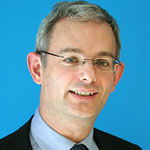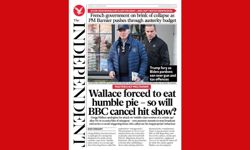It was back in 1999 that Piers Morgan, then editor of the Daily Mirror, was marvelling at the ‘new’ internet with his young lieutenants.
His night editor, Matt Kelly, told him: “I think it’s here for keeps. We should do something regular, perhaps a daily column about the internet.”
Morgan instantly commissioned Kelly to write the column, and even gave it a name: Kelly’s i was born, and became the Mirror’s digital gateway for the next two years.
But the day after its launch, loads of medical students emailed the paper to politely point out that Kelly’s i was the medical slang for ‘arsehole’…
Sixteen years later, Kelly laughs at the memory: “Having your own name on a column was great for security, but we should have looked up possible meanings first!”
We’re chatting in Northcliffe House, Derry Street, Kensington, where Kelly, Local World’s digital director, heads an impressive empire of more than 70 regional media websites.
They range from hulldailymail.co.uk in the north to cornishman.co.uk in the south, and others like derbytelegraph.co.uk, leicestermercury.co.uk and cambridge-news.co.uk in between.
In search of fun
But while the websites’ parent newspaper titles evoke a sense of history, serious news and civic responsibility, Kelly’s determined they change their online content, creating “fun” for readers.
Now aged 46, and married with three children, Kelly gives me three prime examples of such content: photo galleries, regular updating and recent nostalgia.
“Photo galleries should be the default way of taking a story online,” he says. “Just look at MailOnline’s success and the part pictures play. We also need different flavours throughout the day. If a website has the same main story in the evening that it had in the morning, there’s something wrong, because the readers are certainly not the same.
“Our stories don’t change enough. The scale of our audience is always important, but online, we have to cater for the depth of audience, getting people to come back more often to consume more content. And we have to turn around traditional ideas on content value.
“Take archives, often viewed as historic, but what about recent nostalgia? We’re serving up huge engagement levels around things like pictures from nightclubs eight years ago, showing people like me when I had hair. It’s a massive theme that gives readers pleasure.
“Society’s evolved so much and newspapers have fallen behind. We need to get better and better at understanding what our audience wants. A local traffic report online at 8am might be the most useful content all day long for a reader, saving fifteen minutes on their way to work. For them, more important than the splash. News values are changing.”
But for traditional – maybe cynical – journalists, doesn’t this all feel a little too light? What about hard news, exclusive investigations and exposés?
“If you can only fall back on your brilliance as a story teller, you’ll die in digital,” Kelly assures me. “In the old days of newspapers alone, the journalist filed his page seven lead and that was it, job done. In the digital world, that same journalist needs to go and find the audience via social media, Facebook and Twitter.
Focus on relevance
“The old journalist might say: ‘Why should I make all this extra effort?’ The answer is the need for relevance, which journalists can and should understand. They’ve always wanted to feel they’re reaching out into a community and making an impact. That’s relevance.
“If you get digital right, your chance to be relevant is there. But we have to be digital journalists, not print journalists doing digital. And we have to give journalists the tools to bring that format to readers, because other people are already doing digital brilliantly.”
Kelly lists BuzzFeed, Business Insider and TechCrunch as three “great examples” of profitable digital media operations: “Five years ago, everything was a thesis. Now I can point at success stories that analyse user behaviour and let readers dictate the content. BuzzFeed is fascinating because they’re increasingly building content with serious news and investigations.
“You’re now as likely to find a story analysing Ed Miliband’s election pledges on BuzzFeed as you are a picture gallery about twelve cats who look like Mariah Carey. It’s a classic tabloid mix they use to manipulate and monetise the audience.
“We never knew what was working with newspapers, apart from odd sales spikes from the splash. But with digital, we can tell how much content readers look at, for how long, where they came from, and where they go after. That analysis and data helps us to decide what our audience wants, when, and on what platform.”
Local World boasts 21 million unique monthly browsers across all its websites, 170 million monthly page views, and 1.6 million combined Twitter ‘followers’ and Facebook ‘likes’. In February, Local World’s total daily unique users reached 1,054,478, up 69.5% year-on-year. But are these burgeoning audiences making money?
Blanche Sainsbury, Local World’s commercial director, has said digital revenues are growing by 25%, in some cases at the “tipping point” of replacing declining print revenues. Critics, however, say this digital contribution is still small, anything from 6% to 17% of all revenues depending on who you listen to and how it’s calculated.
But Kelly’s vehement that ‘relevance’ can drive growth: “As newspapers, we don’t sell advertising and content, we sell relevance. That’s exactly the same in digital. The trouble is, digital advertising rates are really challenging. So we have to both grow the audience and put the right advert in front of the right person, so there’s more chance for it to be relevant.
The financial opportunity
“It’s a massive challenge, but if we can get the content right, there’s a huge financial opportunity, radically changing [regional media’s] model and getting us closer and more relevant to readers than we ever were when newspapers were in their pomp. The technology to do that is coming to the fore. We have a new programmatic team fine-tuning things so adverts presented to me as a reader are different to those presented to you.”
Kelly’s talking ‘cookies’ now, tracking readers’ internet use: “I can find out all about you through editorial content. I know you support Aston Villa, because that’s what you read on our sports pages. You registered to make comments, so I know your email as well.
“You looked at family holidays in the travel section and in lifestyle you read about the iPhone 6. Now I know you’re a Villa fan, a family man and that you’re after a new phone. You fall into a definite category that advertisers will pay a fortune to hit directly. How about a new phone, or a last minute deal to Tenerife?”
It sounds a bit like stalking, and I suggest that readers hate adverts annoyingly popping out of stories or masquerading as editorial. But Kelly says: “If it’s relevant and you end up buying a product, it’s because of perfect content.
“I try to get away from the demarcation of editorial and advertising, because as long as you know what’s what, it’s fine. Yes, there are lots of questions and challenges, the foremost about authority and trust … We’re on a journey.
Changing face of journalism
“Traditionally, newspapers never saw themselves as technical businesses. The nearest technology was delivery vans or the print site. But now journalists are face-to-face with the CMS [content management system], social media interaction, data journalism and analytics every day.”
Kelly says journalists are now more comfortable “embracing” people with that expertise – like website developers, social media experts, search engine optimisation experts and CMS developers. “They’ve nothing to do with traditional journalism, but as much do to with digital journalism as telling a great story. Our transition from a relationship and brand business to a technology-driven, audience-focused business appeals commercially as well.”
He believes the journalist’s role has dramatically changed from being a “pure content creator” to a “part-time content creator, and part-time content curator”, for example “finding and curating the best, most relevant stuff from all the great video footage out there”.
But Kelly agrees that it’s people who’ll make all this work, not technology, and that they need to be “modern, fun-loving and in touch with the public”, not computer geeks.
“If a website’s dour and miserable, it means the editor’s dour and miserable. We need vibrant editors and newspapers because that’s what we then see in the title’s websites, and that’s what people want. At Local World, we’re very lucky to have a high proportion of those people, both as editors and the people I’ve brought with me – a sense of humour.”
Kelly’s last thought is that journalists must become less precious and more transparent: “You hear young journalists constantly sharing new ideas, trying things out, explaining what worked. Our new online tool, called Parsley, gives journalists transparency on their success and the performance of others.
“You decide a metric: stories, times average page views, equals the total. Then Parsley gives you a league table – though we shouldn’t call it that – which allows you to see exactly how people are delivering to audiences.
“It shows you where an audience comes from on different platforms – like Facebook, Twitter, Reddit – the time they spent on your story, their demographics, geography, how valuable they are. I’m incredibly excited about giving journalists the tools to tell stories they are proud of.”
As I leave, I ask about Local World’s chief executive, the formidable David Montgomery – the ex-editor of News of the World and Today before becoming a media executive.
Kelly says he was “quite wary” when he arrived for interview last year, expecting someone “paying lip service to digital”. But he adds: “I listened to David, and was knocked out by what he said. He’s great to work for, a true believer in the power of content. And he’s committed to digital.”
Kelly’s background
Born and bred on Merseyside, Kelly worked at the Formby Times and Southport Visitor before becoming a “terrible district reporter” for the Liverpool Daily Post.
He found his forte as a sub-editor at the Liverpool Echo and then the Daily Record, Glasgow, where editor Terry Quinn spotted his design interest and showed him award-winning newspapers from Latin America which “shaped my whole career”.
Aged 26, Kelly was number three for features production at the Daily Mirror, catching the eye of editor Piers Morgan as a “gobby, opinionated, quite aggressive scouser, trained on an Apple Mac”.
Back then, the Mirror’s night editor ‘drew’ pages, then talked to artists who designed them on a Mac. But the morning after Princess Diana’s death in 1997, Morgan decided there was “no time to mess around” and that Kelly should design directly on a Mac, which “changed the way the Mirror was produced forever”.
Kelly was appointed night editor, in charge from 11pm to 1am: “It was thrilling, and I got a kick out of changing as much as I could. Piers always said: ‘I’ll never bollock you for doing something, but I will for not doing something,’ a really useful maxim for digital.”
His internet interest meant he soon helped design a “very rudimentary” mirror.co.uk website. Later, he oversaw the Daily Mirror’s redesign for new editor Richard Wallace, referring back to the award-winning papers he’d seen in Glasgow – the Clarín from Argentina and RÉCORD from Mexico.
These papers’ “vibrant shapes, stunning graphics, and fresh use of colour” came from Spanish designers Cases i Associats, who Kelly later worked for. But first he spent six years developing the Mirror’s digital offering, becoming publisher of mirror.co.uk, launching MirrorFootball.co.uk – “one of the things I’m most proud of” – and 3am.co.uk – “a failure because I challenged Google’s SEO domination”.
After eighteen years at the Mirror, Kelly joined Cases i Associats in 2012, assisting newsroom transformation at Clarín in Buenos Aires before returning to the UK to work for Local World last June.












